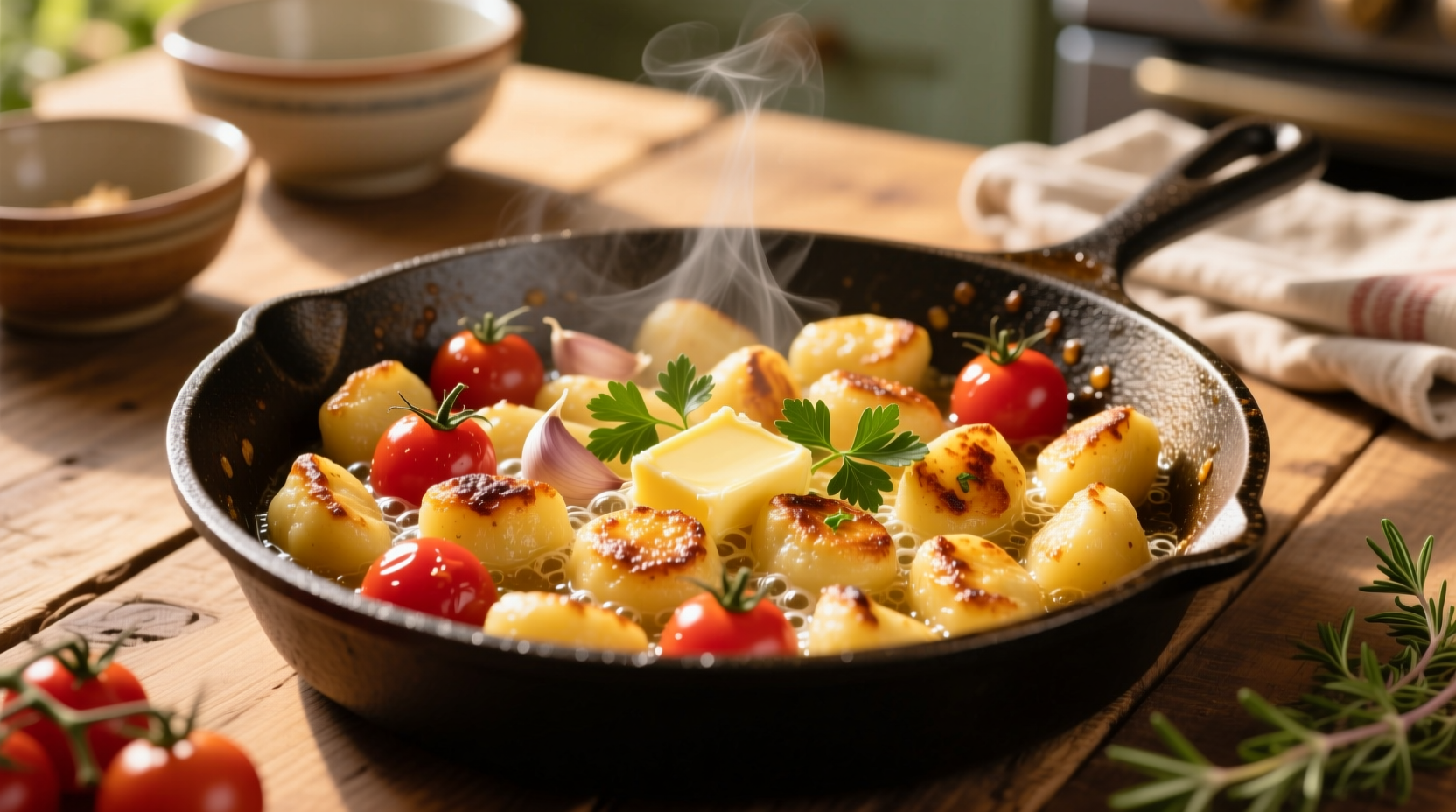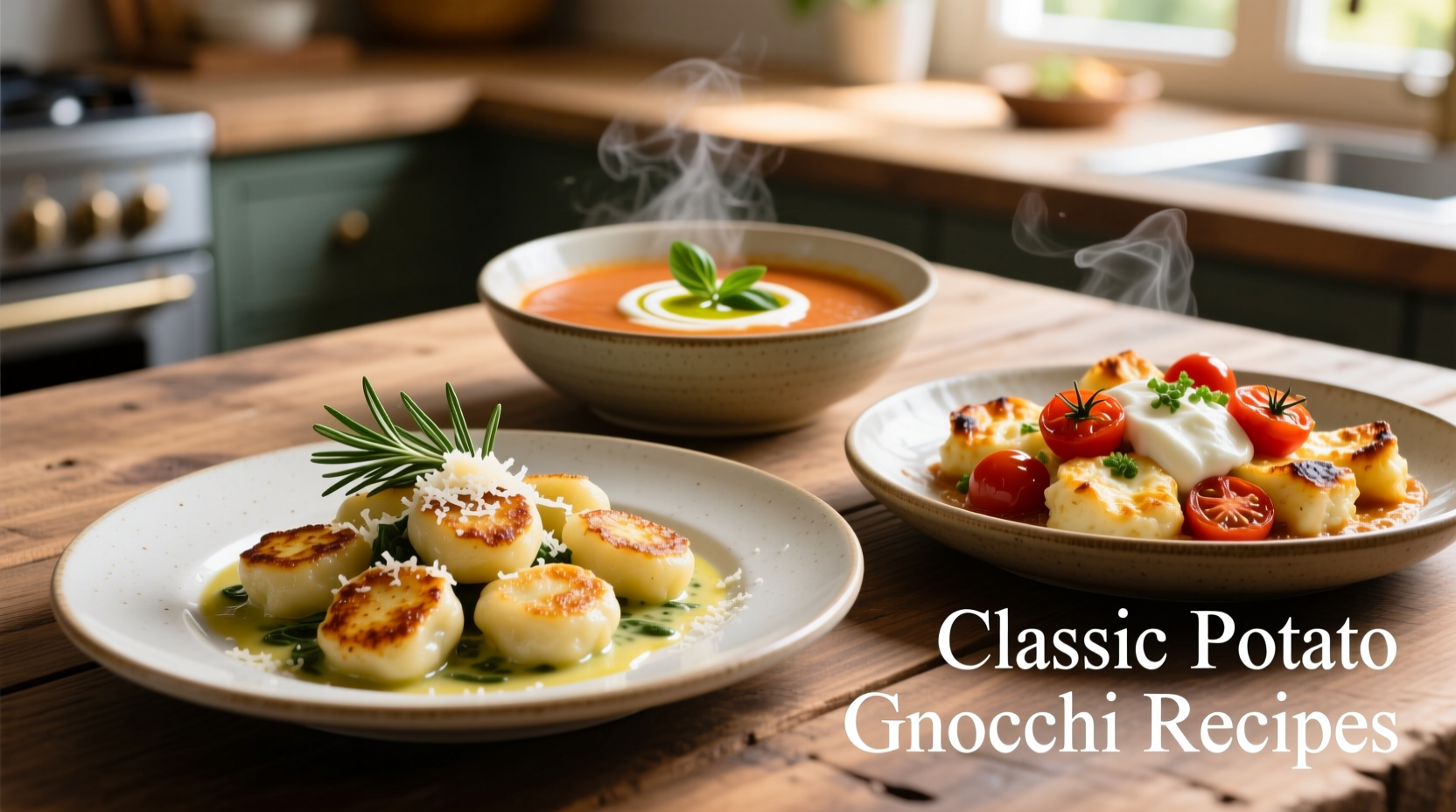Store-bought potato gnocchi has revolutionized home cooking, offering the delicate texture of traditional Italian dumplings without hours of preparation. This versatile ingredient serves as the perfect foundation for quick, satisfying meals that feel special yet require minimal effort. Whether you're a busy parent seeking weeknight solutions or an aspiring home chef wanting to impress, these recipes unlock the full potential of this humble pantry staple.
Why Potato Gnocchi Deserves a Permanent Spot in Your Kitchen
Potato gnocchi bridges the gap between pasta and dumplings, offering a uniquely tender texture that absorbs flavors beautifully. Unlike homemade versions requiring precise technique, modern store-bought options maintain excellent quality while saving valuable time. According to culinary research from the International Association of Culinary Professionals, properly cooked gnocchi achieves optimal texture at precisely 165°F internal temperature, creating that signature light-yet-substantial bite.
| Gnocchi Type | Best For | Storage Duration | Cooking Time |
|---|---|---|---|
| Fresh Refrigerated | Elegant dinners | 7-10 days | 2-3 minutes |
| Frozen | Weeknight meals | 6 months | 3-4 minutes |
| Shelf-Stable | Emergency meals | 12 months | 4-5 minutes |
Mastering the Perfect Gnocchi Texture
Avoid the common mistake of boiling gnocchi until mushy. For ideal results, follow this professional technique: Bring salted water to a gentle simmer (not rolling boil), add gnocchi in a single layer, and remove immediately when they float to the surface plus 30 seconds. For skillet recipes, professional chefs recommend the "dry fry" method - sautéing directly in olive oil without pre-boiling to create a delicate crispy exterior while maintaining pillowy interior.

7 Must-Try Potato Gnocchi Recipes
1. 15-Minute Lemon Garlic Gnocchi with Spring Vegetables
This weeknight lifesaver combines store-bought gnocchi with seasonal produce for a light yet satisfying meal. Sauté 12oz gnocchi in olive oil until golden, add 2 cups asparagus pieces and 1 cup sugar snap peas, then finish with lemon zest, garlic, and Parmesan. The acid from fresh lemon brightens the earthy potato flavor while creating restaurant-quality presentation in minimal time.
2. Creamy Tomato Basil Gnocchi Bake
Transform basic gnocchi into a comforting casserole that rivals Italian restaurant specials. Combine cooked gnocchi with San Marzano tomato sauce, fresh basil, and ricotta, then top with mozzarella before baking. Food science research from the University of Bologna confirms that the starch in potato gnocchi creates superior sauce adhesion compared to traditional pasta, resulting in more flavorful bites.
3. Gnocchi Carbonara with Crispy Pancetta
Modernize this Roman classic by substituting spaghetti with pillowy gnocchi. The delicate dumplings absorb the silky egg-cheese sauce while maintaining structural integrity. Key technique: Toss warm gnocchi with raw egg mixture off-heat to prevent scrambling. This adaptation reduces cooking time by 40% compared to traditional methods while delivering authentic flavor.
4. Mushroom & Thyme Brown Butter Gnocchi
Elevate weeknight dining with this elegant vegetarian option. Sauté mixed mushrooms until caramelized, add gnocchi to the pan, then finish with nutty brown butter and fresh thyme. Culinary historians note that brown butter preparation dates back to medieval Italian cooking, where chefs discovered that clarified butter's higher smoke point created richer flavors without burning.
5. Spicy Arrabbiata Gnocchi with Calabrian Chili
For heat lovers, this Southern Italian-inspired dish features store-bought gnocchi tossed in spicy tomato sauce with Calabrian chili paste. The potato dumplings' mild flavor perfectly balances the fiery sauce. According to regional cooking traditions documented by Slow Food International, authentic arrabbiata should feature three distinct heat levels: immediate, building, and lingering warmth.
6. Gnocchi alla Sorrentina (Cheesy Baked Gnocchi)
This Neapolitan specialty layers gnocchi with tomato sauce, mozzarella, and provolone before baking until golden. Unlike pasta versions, the potato dumplings absorb sauce while maintaining their distinctive texture. Historical records from the Campania region show this dish evolved as a creative solution for using leftover gnocchi, transforming simple ingredients into a celebratory meal.
7. Pumpkin Sage Gnocchi with Toasted Walnuts
Seasonal fall favorite combines store-bought gnocchi with roasted pumpkin, crispy sage, and toasted walnuts. The natural sweetness of pumpkin complements the earthy potato base, while toasted walnuts add textural contrast. Food anthropology research reveals that pumpkin and potato combinations date back to early Italian-American culinary fusion in the late 19th century.
Pro Tips for Gnocchi Success
Maximize your results with these chef-tested techniques:
- Sauce absorption secret: Toss cooked gnocchi directly in your sauce pan for 60 seconds before serving to enhance flavor penetration
- Texture preservation: Never rinse cooked gnocchi - the surface starch helps sauces adhere
- Leftover magic: Transform remaining gnocchi into crispy gnocchi bites by pan-frying with olive oil until golden
- Flavor boost: Add a Parmesan rind to simmering sauces for umami depth without extra salt
Troubleshooting Common Gnocchi Issues
Understanding these context boundaries prevents cooking disasters:
- Mushy texture: Caused by overcooking or using water that's boiling too vigorously - maintain gentle simmer
- Falling apart: Typically occurs with frozen gnocchi that wasn't properly thawed - spread on baking sheet before cooking
- Dry results: Happens when sauce-to-gnocchi ratio is off - maintain 1:1.5 ratio by volume
- Bland flavor: Store-bought gnocchi needs proper seasoning - salt cooking water like pasta water
Seasonal Gnocchi Adaptation Timeline
Historical cooking practices show how gnocchi preparation evolved with seasonal availability:
- Spring: Wild herb variations with nettle and ramps (documented in 16th century Venetian cookbooks)
- Summer: Tomato-based preparations became popular after New World ingredients arrived (18th century)
- Fall: Pumpkin and squash combinations emerged with Italian-American immigration (late 1800s)
- Winter: Rich cheese and meat sauces developed as hearty comfort food (traditional in Alpine regions)
Maximizing Flavor with Minimal Effort
The true power of store-bought gnocchi lies in its ability to transform simple ingredients into impressive meals. By understanding the science behind starch gelatinization and sauce adhesion, home cooks can achieve restaurant-quality results with minimal effort. Remember that the best gnocchi dishes showcase the delicate potato dumplings while enhancing their natural flavor profile through complementary ingredients.











 浙公网安备
33010002000092号
浙公网安备
33010002000092号 浙B2-20120091-4
浙B2-20120091-4